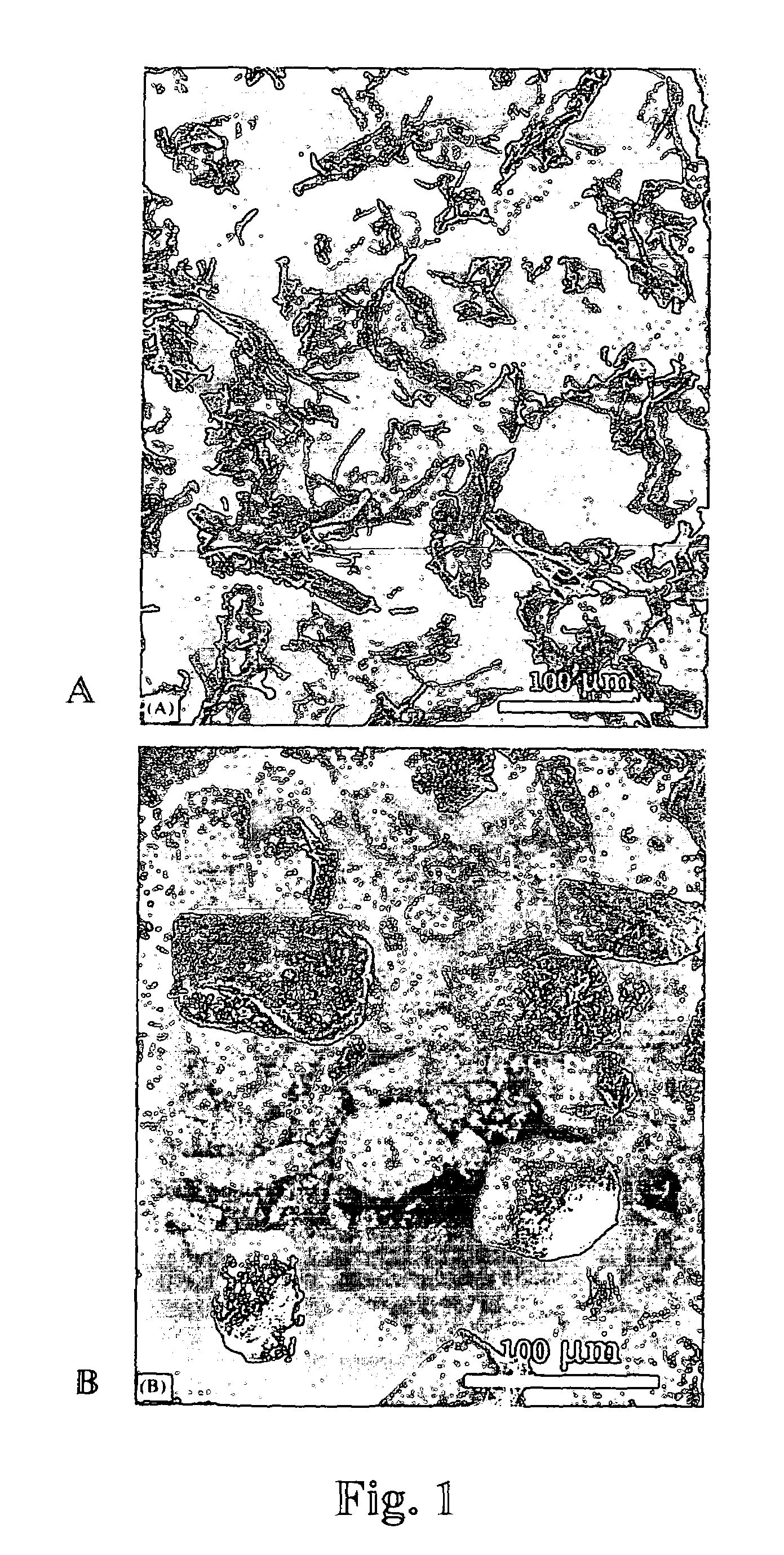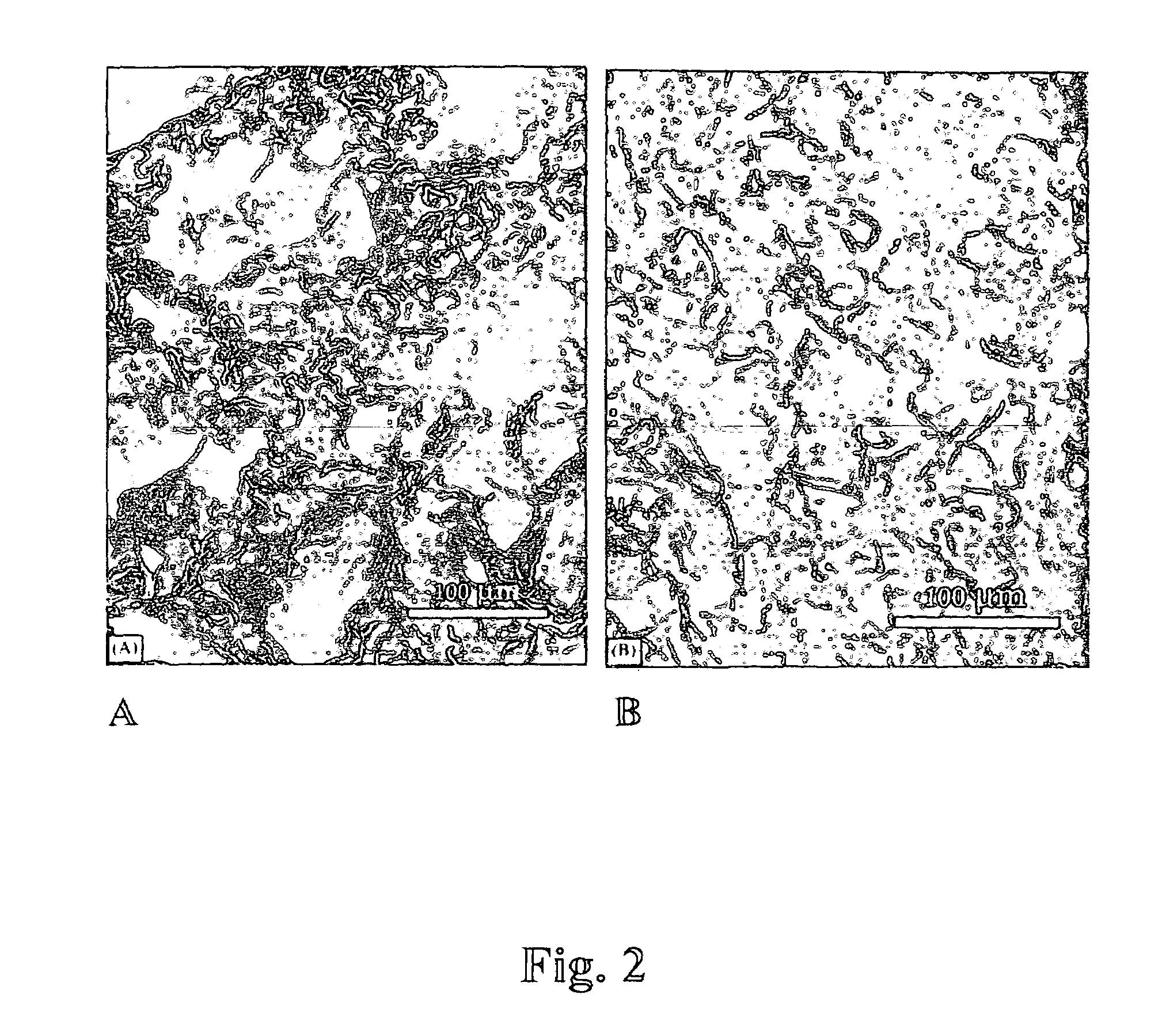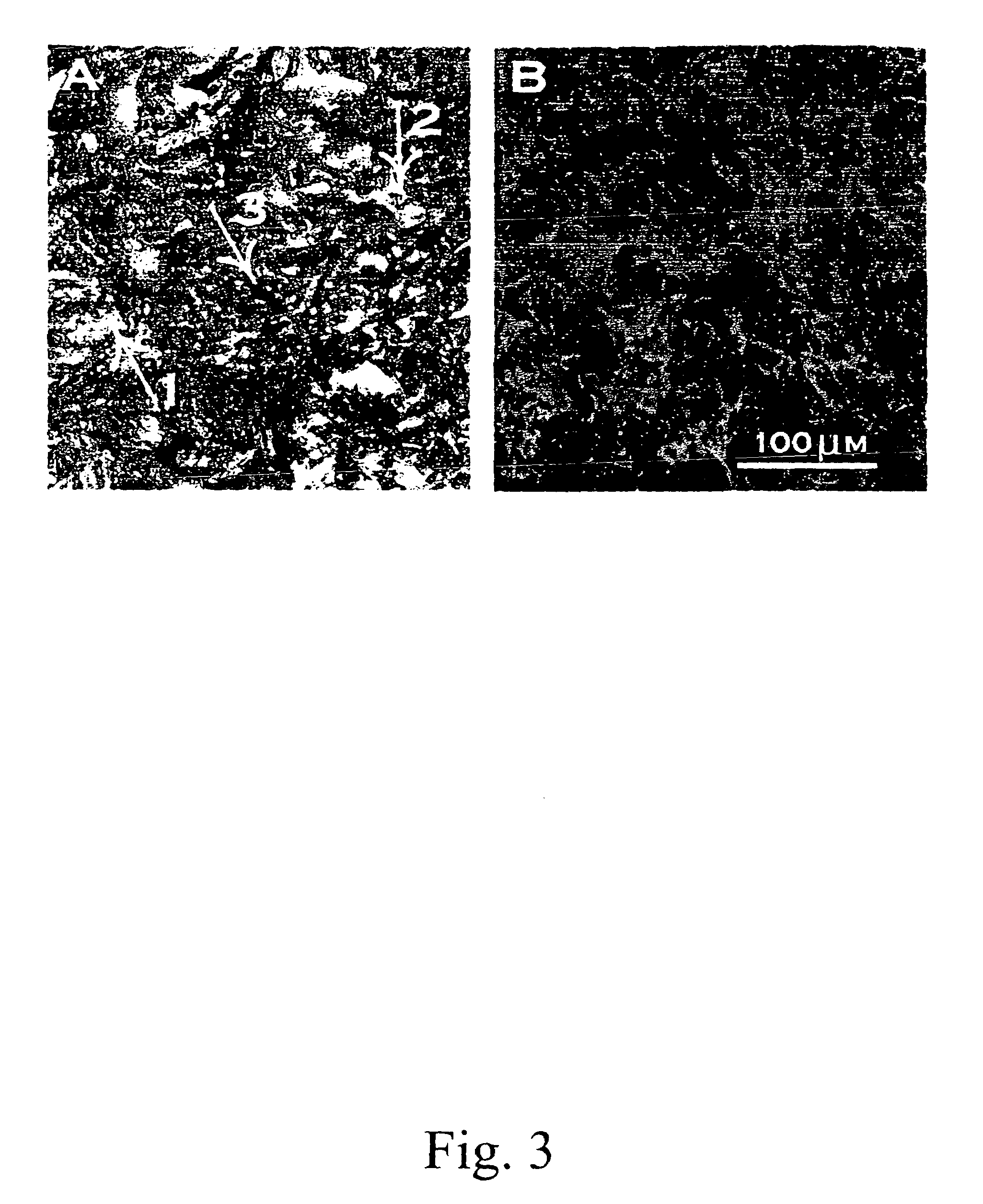Porous polymeric matrices made of natural polymers and synthetic polymers and optionally at least one cation and methods of making
- Summary
- Abstract
- Description
- Claims
- Application Information
AI Technical Summary
Problems solved by technology
Method used
Image
Examples
example 1
[0047]Materials: Sodium salts of pectin from citrus fruits (degree of esterification, DE, 93%), bovine serum albumin (BSA), fluoresceinamine, p(LGA) [50:50; average Mw; 50,000-75,000; Tg 45-50C], pectinase 3XL, neutral-buffered formalin, trypan blue, DNA Quantitation Kit, 2,2,2,-trifluoroethanesulfonyl chloride (tresyl chloride), and dimethylsulfoxide (DMSO) were purchased from Sigma-Aldrich (St. Louis, Mo.). Fetal bovine serum, α-minimum essential medium (α-MEM), ascorbic acid-free a-MEM (Formula 94-5049EL), penicillin-streptomycin, Dulbecco's phosphate-buffered saline, and trypsin-EDTA were purchased from Gibco BRL Products, Life Technologies (Grand Island, N.Y.). Ascorbic acid was purchased from Fisher Scientific (Pittsburgh, Pa.). Micro BCA® reagent was from Pierce (Rockford, Ill.). Ethylene oxide was purchased from H.W. Anderson Products (Chapel Hill, N.C.). All other chemicals were A.C.S. grade, and used without further purification.
[0048]De-esterification of pectins: Gentle a...
example 2
[0080]Matrix preparation using pectin and poly(lactide-co-glycolide)(p(LGA)). Pectin was dissolved in D.I. water at the concentration of 1-50 mg / ml; p(LGA) was dissolved in dichloromethane at 10-200 mg / ml; the two solutions were mixed at the volume ratio of 1 / 10 or 10 / 1 (pectin: p(LGA)) by vortexing. The mixture was poured into a mold, which was pre-cooled at the temperature lower than −75° C. (using liquid nitrogen or the mixture of dry ice and isopropyl alcohol). After the slurry was frozen, the mold was transferred into a desiccator which was placed in an icebox containing dry ice (−56.6° C.) and connected to a vacuum line. The icebox was evacuated for 8 hrs at −56.6° C., followed by 12 hrs in lyophilizer at −10° C.
[0081]All of the references cited herein are incorporated by reference in their entirety. Also incorporated by reference in their entirety are the following references: BeMiller, J. M., An introduction to pectins: structure and properties, In: Chemistry and function of...
PUM
| Property | Measurement | Unit |
|---|---|---|
| Mass | aaaaa | aaaaa |
| Mass | aaaaa | aaaaa |
| Mass | aaaaa | aaaaa |
Abstract
Description
Claims
Application Information
 Login to View More
Login to View More - R&D
- Intellectual Property
- Life Sciences
- Materials
- Tech Scout
- Unparalleled Data Quality
- Higher Quality Content
- 60% Fewer Hallucinations
Browse by: Latest US Patents, China's latest patents, Technical Efficacy Thesaurus, Application Domain, Technology Topic, Popular Technical Reports.
© 2025 PatSnap. All rights reserved.Legal|Privacy policy|Modern Slavery Act Transparency Statement|Sitemap|About US| Contact US: help@patsnap.com



